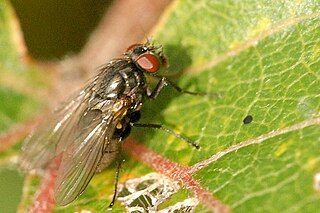
Fannia armata is a fly species in the Fanniidae family. This species is smaller and more slender than the house fly, Musca domestica, and is similar in appearance to the lesser house fly, Fannia canicularis. It is found in the Palearctic. For identification see
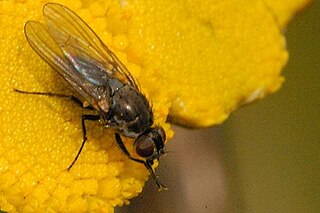
Fannia lepida is a fly species in the Fanniidae family. This species is smaller and more slender than the house fly, Musca domestica, and is similar in appearance to the lesser house fly, Fannia canicularis. It is found in the Palearctic. For identification see

Fannia sociella is a fly species in the Fanniidae family. This species is smaller and more slender than the house fly, Musca domestica, and is similar in appearance to the lesser house fly, Fannia canicularis. It is found in the Palearctic. For identification see

Campiglossa loewiana is a species of fly in the family Tephritidae, the gall flies. The species is found in the Palearctic. The body is black brown; the upper part of pleuras and the midline of the scutellum dirty yellow. Femora 1 and III more or less browned.Oviscapte is a shiny black.Long. : 3-4 mm. The larvae feed in flower heads of Solidago virgaurea and Aster amellus.

Azelia nebulosa is a species of fly in the family Muscidae. It is found in the Palearctic.

Agromyza nana is a species of fly in the family Agromyzidae. It is found in the Palearctic. Description of imago-Interocular space red. Antennomeres 1 and II red. Peristoma and palps black. Dorsocentral bristles : 1 +3 subequal; acrostics in four rows. Legs black, knees red. Abdomen black with lighter pruinosity than the thorax. Long.:1,75-2,5 mm. The larva mines Trifolium pratense, Melilotus altissima, Medicago.

Fannia mollissima is a species of fly in the family Fanniidae. It is found in the Palearctic. For identification see
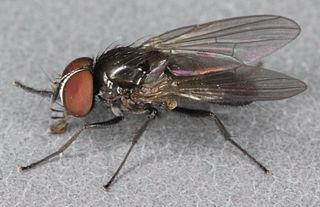
Fannia serena is a species of fly in the family Fanniidae. It is found in the Palearctic. For identification see
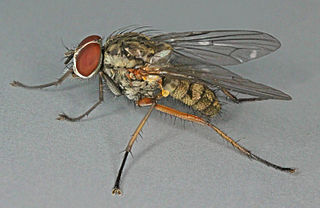
Hylemya nigrimana is a species of fly in the family Anthomyiidae. It is found in the Palearctic. For identification see:
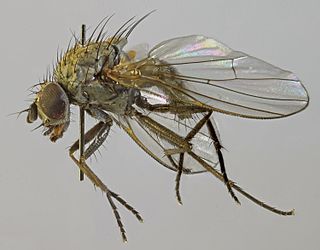
Azelia cilipes is a species of fly in the family Muscidae. It is found in the Palearctic.

Bibio johannis is a species of fly in the family Bibionidae. It is found in the Palearctic.

Bibio varipes is a species of fly in the family Bibionidae. It is found in the Palearctic.
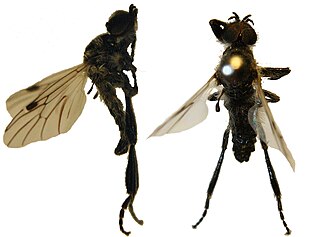
Bibio nigriventris is a species of fly in the family Bibionidae. It is found in the Palearctic.

Bibio longipes is a species of fly in the family Bibionidae. It is found in the Palearctic and the Nearctic.
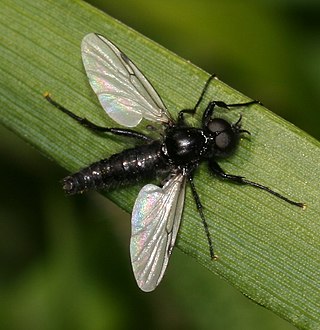
Bibio leucopterus is a species of fly in the family Bibionidae. It is found in the Palearctic.
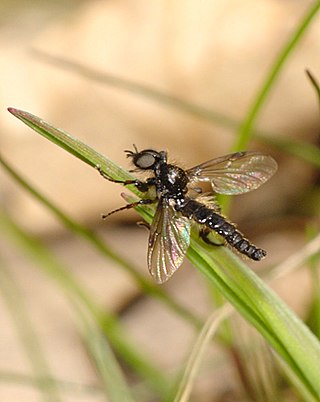
Bibio lanigerus is a species of fly in the family Bibionidae. It is found in the Palearctic.
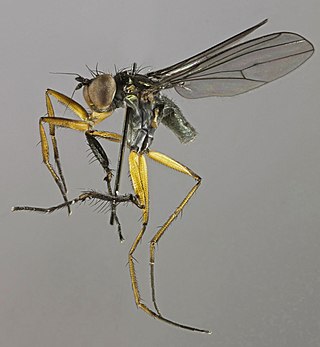
Campsicnemus scambus is a species of fly in the family Dolichopodidae. It is distributed in Europe, except for the south.

Delia albula is a species of fly in the family Anthomyiidae. It is found in the Palearctic. For identification see
Bibio reticulatus is a species of fly in the family Bibionidae. It is found in the Palearctic.
Bibio venosus is a species of fly in the family Bibionidae. It is found in the Palearctic.


















